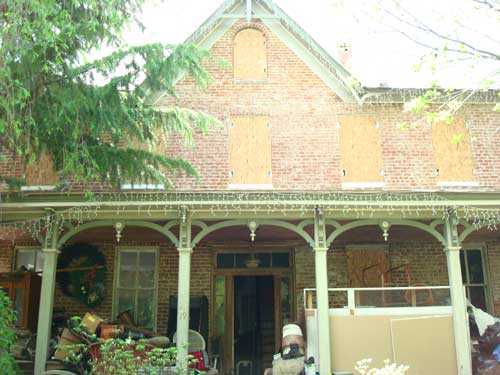Volunteer Fire Fighter Found Unresponsive With His Facepiece Off Dies Eight Days Later – Maryland
 Death in the Line of Duty...A summary of a NIOSH fire fighter fatality investigation
Death in the Line of Duty...A summary of a NIOSH fire fighter fatality investigation
F2013-13 Date Released: April 24, 2014
Executive Summary
On April 24, 2013, a 24-year-old male volunteer fire fighter sustained injuries at a residential structure fire and died eight days later at a metropolitan trauma center. At 0109 hours, Special Unit 418 (SU418) responded with two fire fighters from the first-due volunteer fire station. SU418 was the first unit on scene receiving reports of occupants trapped in the building from police and occupants screaming that a man was trapped on the second floor. The two fire fighters donned their personal protective equipment and made entry. Engine 56 (E56) arrived with a captain and 3 fire fighters. The captain assumed command, conducted a size-up, and struck a 2nd alarm due to heavy fire in the rear of the structure. Truck 404 arrived and was instructed to start rescue and ventilation operations. E56’s crew stretched a 1 ¾-inch hoseline to the front door and met one of the fire fighters (the victim) from SU418. The SU418 fire fighter stated that there was an occupant trapped somewhere on the second floor. E56’s nozzleman noticed the 1st floor hallway access was severely limited, due to the hoarding of objects along the walls and on the floor, so they took the stairs to the second floor landing where it was very hot and smokey. When E56 and SU418 reached the 2nd floor, the nozzleman opened the nozzle in short bursts (penciling) to cool down the 2nd floor. The nozzleman radioed Command to get the 2nd floor ventilated. Hearing a personal alert safety system (PASS) alarm, the nozzleman called out to the SU418 crew with no response, and then called a “Mayday.” E56’s backup man went around the nozzleman towards the sound of the PASS alarm. After pushing the door open to a bedroom located on the “B/C” corner of the house, he crawled into the bedroom and found a fire fighter standing and pointing to a second fire fighter on the floor behind the door. The downed fire fighter was found with his gloves, helmet, hood, and facepiece removed. With the help of the nozzleman, they got the unresponsive fire fighter down the stairs and onto the front porch. The downed fire fighter was put on a backboard and taken to Medic 56. Paramedics were able to re-establish a pulse and respiration. The fire fighter was transported to a local hospital and then transferred to a metropolitan trauma center. Unfortunately, the fire fighter passed away from his injuries eight days later.

Residential Structure
(NIOSH Photo)
Contributing Factors
- Civilian at risk in the structure
- Blocked access/egress due to hoarding that added to the fuel load
- Multiple stairways
- Uncoordinated response to an emergency scene
- Facepiece removed in immediately dangerous to life or health (IDLH) environment
- SU418 crew left the portable radio in the special unit
- Loss of crew integrity
- Lack of size-up and situational awareness by initial crew
- Lack of ventilation.
Key Recommendations
- Ensure that emergency response deployment protocols are developed to prevent uncoordinated responses to an emergency scene
- Ensure that crew integrity is properly maintained by voice or radio contact when operating in an immediately dangerous to life and health (IDLH) atmosphere
- Ensure that fire fighters are trained in size-up, risk management, and situational awareness
- Ensure that all responding apparatus are staffed with a properly trained and qualified officer
- Ensure all fire fighter riding positions are provided radios and fire fighters are trained on their proper use
- Ensure fire fighters are trained in self-contained breathing apparatus (SCBA) emergencies
- Ensure that fire fighters are properly trained in air management
- Ensure that fireground operations are coordinated with consideration given to the effect of ventilation.
The National Institute for Occupational Safety and Health (NIOSH), an institute within the Centers for Disease Control and Prevention (CDC), is the federal agency responsible for conducting research and making recommendations for the prevention of work-related injury and illness. In 1998, Congress appropriated funds to NIOSH to conduct a fire fighter initiative that resulted in the NIOSH “Fire Fighter Fatality Investigation and Prevention Program” which examines line-of-duty-deaths or on duty deaths of fire fighters to assist fire departments, fire fighters, the fire service and others to prevent similar fire fighter deaths in the future. The agency does not enforce compliance with State or Federal occupational safety and health standards and does not determine fault or assign blame. Participation of fire departments and individuals in NIOSH investigations is voluntary. Under its program, NIOSH investigators interview persons with knowledge of the incident who agree to be interviewed and review available records to develop a description of the conditions and circumstances leading to the death(s). Interviewees are not asked to sign sworn statements and interviews are not recorded. The agency's reports do not name the victim, the fire department or those interviewed. The NIOSH report's summary of the conditions and circumstances surrounding the fatality is intended to provide context to the agency's recommendations and is not intended to be definitive for purposes of determining any claim or benefit.
- Page last reviewed: November 18, 2015
- Page last updated: October 15, 2014
- Content source:
- National Institute for Occupational Safety and Health Division of Safety Research


 ShareCompartir
ShareCompartir